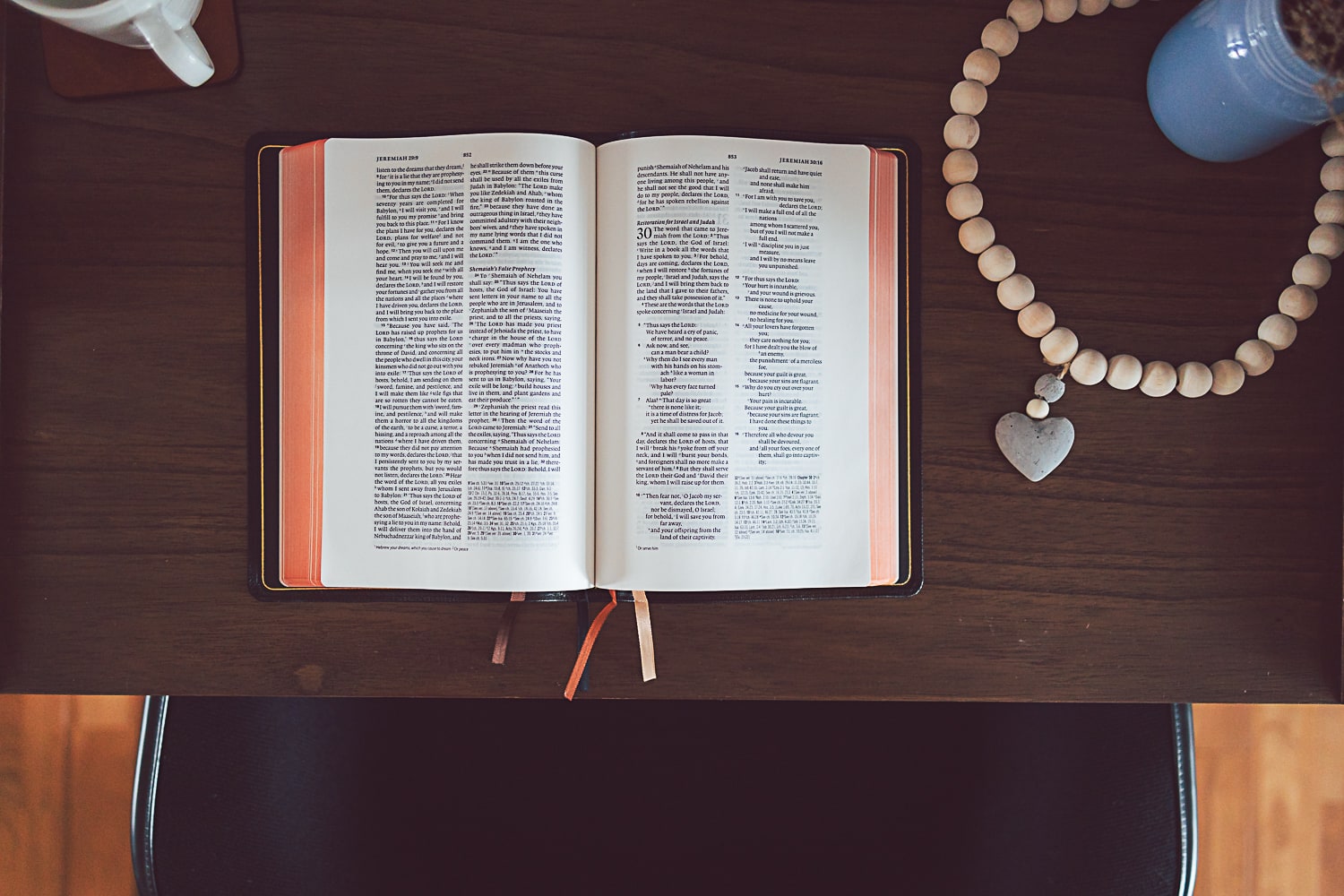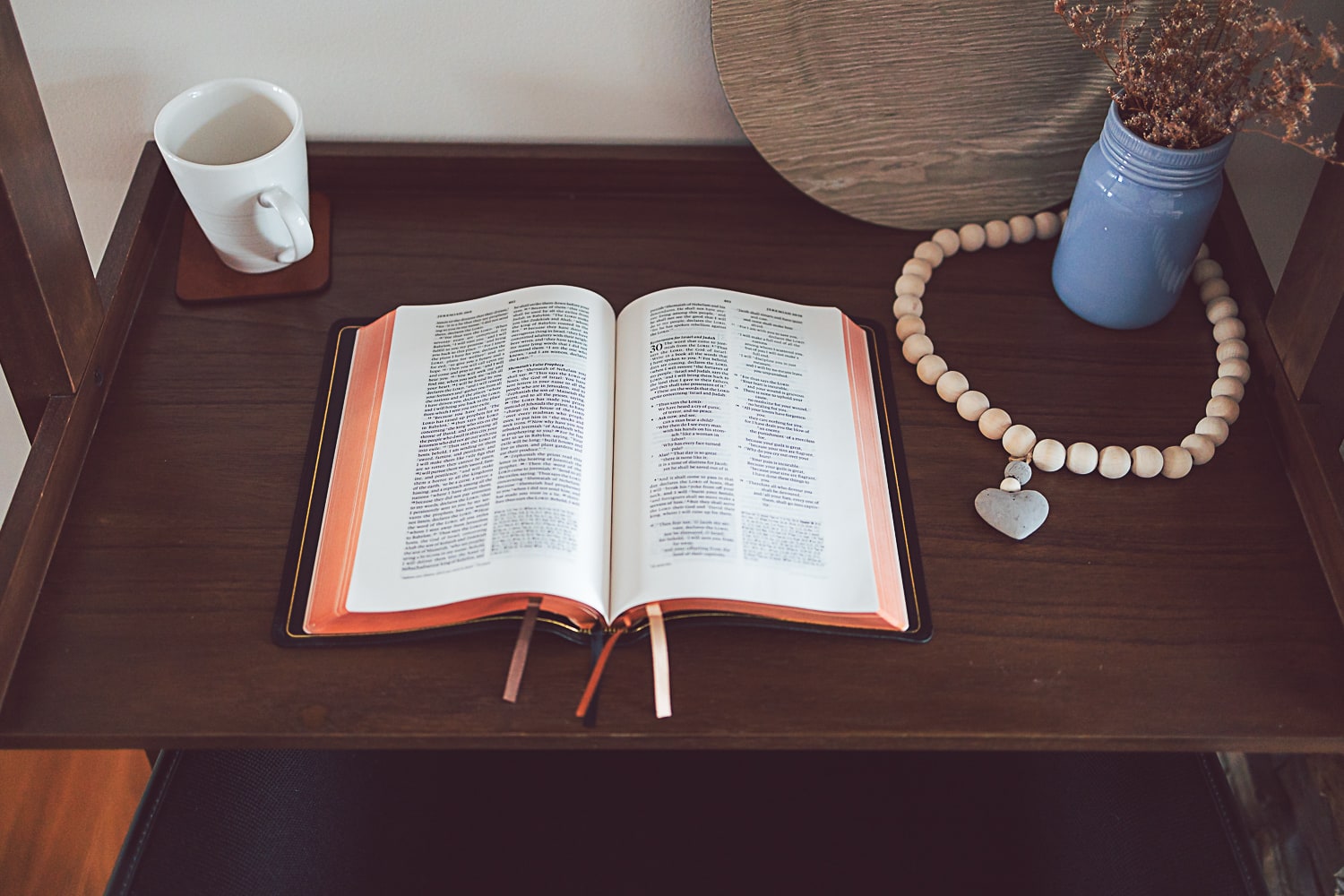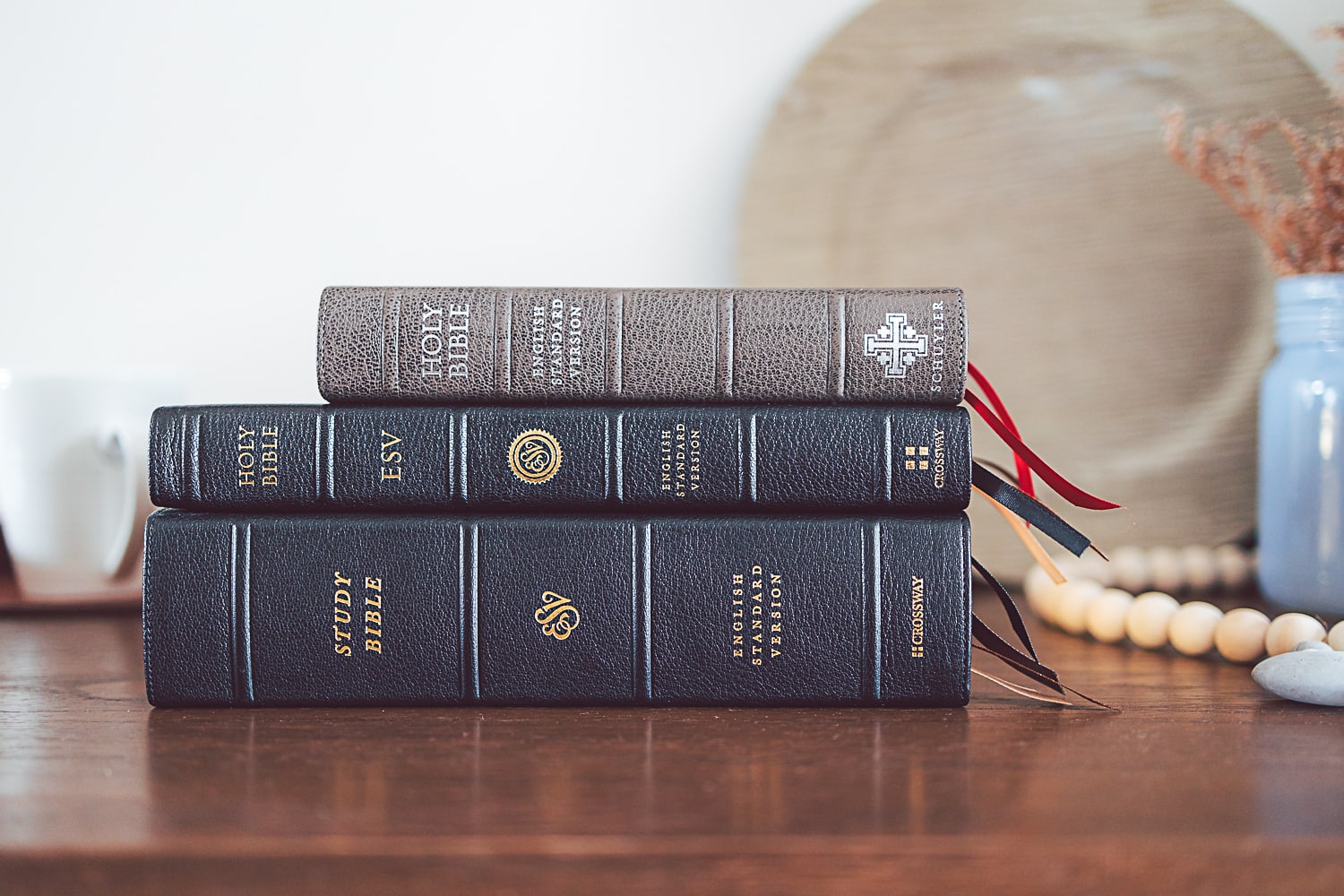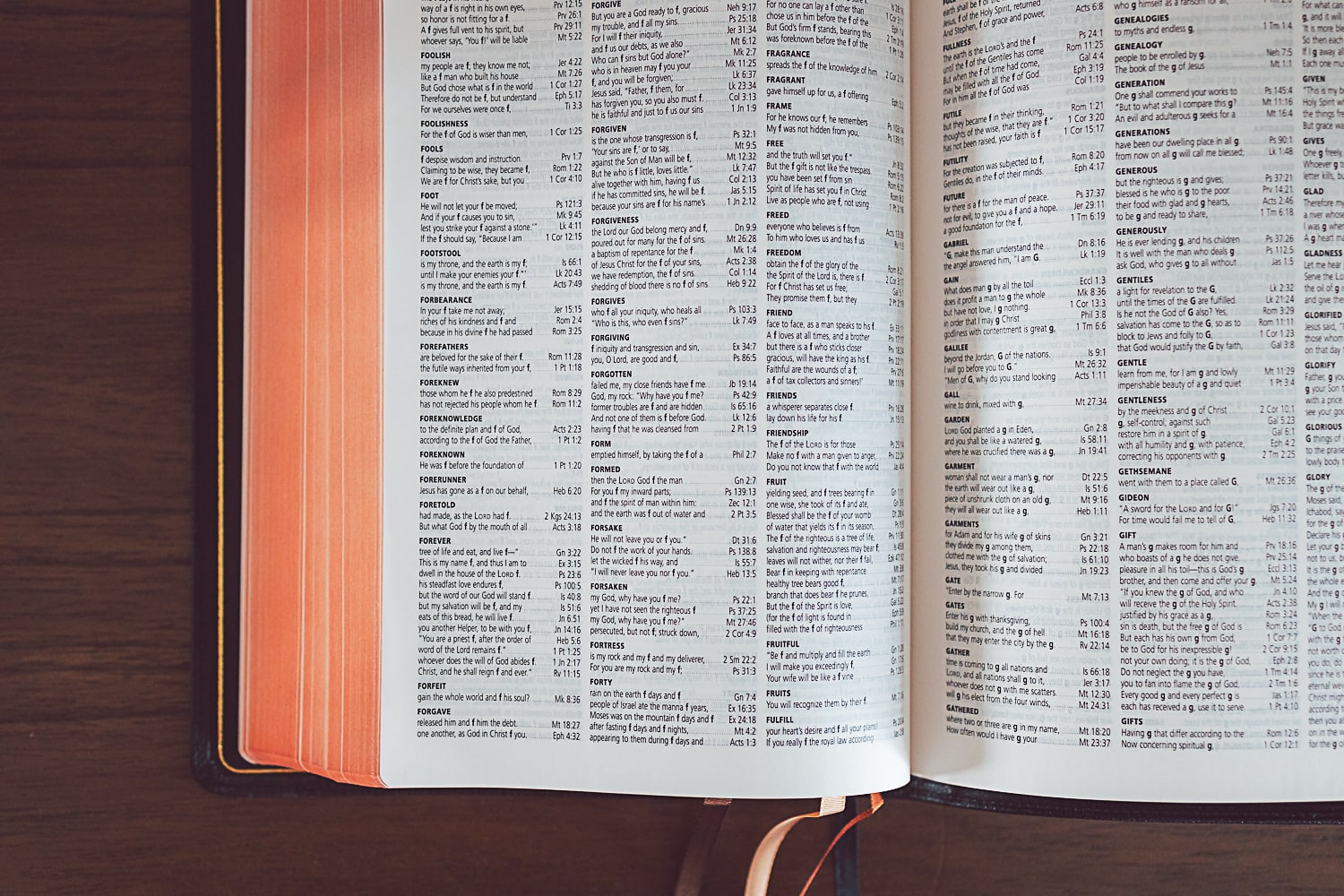
Not that I receive a lot of email about my past Bible reviews, but I do occasionally. Whenever I do receive an email, it’s always about the Crossway ESV Heirloom Single Column Legacy.
I’m not exactly sure why, to be honest. Perhaps it’s something to do with the Legacy’s perfectly balanced single column of text. Perhaps it’s the simplicity of the page, being free of major cross-references and commentary. Whatever the reason, it seems to be the most popular Bible review I’ve written — the most popular review I’ve written for this site period, in fact.
My original review of the Legacy was pretty positive. It remains the most beautiful Bible I’ve ever seen, with it’s single column of text perfectly spaced in the margins and offset from the gutter. My Legacy’s goatskin leather cover is the very best leather cover I’ve come across so far. And, since it was my first premium Bible, it has a special place on my mantle that I admire every day.
Here’s the “but” though: Over time, despite the inherent beauty of the single column of text, I’ve come to dislike the Legacy for any actual reading. It’s terrible of me, I know. If I could, I’d use each Bible each day. For the most part, the Legacy is my least used Bible.
Most admired. Least used.
In my case, I’ve pinpointed my lack of usage to the lack of commentary and study resources as well as the overwhelming amount of text on each line. The 9 pt. font is wonderful and easy on the eyes, but that small font with that wide of a text block means a lot of characters per line.

I think this is why Crossway created the Heirloom Wide Margin. For all intents and purposes, the Heirloom Wide Margin is the Single Column Legacy, but with two very nicely sized columns for faster reading. There are also included cross-references in the bottom right of each page, and plenty of space in the wide margins for note-taking.
Many folks who have inquired about the Single Column Legacy have done so in pursuit of a simple, pure Bible — a Bible without any cross-references, commentary, additional translation aids, etc. The Heirloom Wide Margin doesn’t necessarily meet this set of needs, but it’s vastly superior than the Legacy in the one hallmark feature: readability.

In all likelihood, many of my comments here about the Heirloom Wide Margin will end up part and parcel of my original review of the Heirloom Single Column Legacy. I’m going to actively avoid reading that review for the sake of keeping everything as pure as can be.
Either way, the premise is simple: The Heirloom Wide Margin is the usable and readable twin of the Single Column Legacy.
Editor’s Note: I’ve been supplied a copy of the Crossway ESV Heirloom Wide Margin for purposes of review. I always do my best to keep things as honest as possible when supplied a product for review. These Bibles are so incredibly well made that it’s hard to come up with a critique. However, you’ll note I’ve found some areas of improvement.
Design and Materials
The thing about twins is that, while they share the same DNA, they very often don’t end up looking alike. I know a few sets of twins, one of which is so different, I can tell them apart by their voice.
As far as the Legacy and Wide Margin go, you can tell them apart in how they feel, as well as other, more fundamental specifications. It actually took a bit of study and careful examination to notice the differences. But once you notice them, you can’t unsee them.
Leather
Like every premium Bible these days, the Heirloom Wide Margin sports a luxurious goatskin leather cover with an interior calfskin or synthetic leather. This allows for a soft, supple cover that easily folds in on itself and returns back to its original form.

However! This copy of the Wide Margin has a much, much stiffer goatskin leather cover than any other premium goatskin leather Bible I own. It’s especially stiff compared to the Legacy. It’s so stiff, in fact, that I had to do a double-take to make sure there was no cardboard or interior stiffener to keep the cover so anti-flimsy.
{% include image.html img=”https://static.thenewsprint.co/media/2020/03/ESV-Heirloom-Wide-Margin-09.jpg” title=”Crossway ESV Heirloom Wide Margin” caption=”You’ll notice how little the Wide Margin falls away from your hand, even though it’s slightly larger than the Single Column Legacy.” %}
I have a few theories for why the added stiffness.
One is that this feels like an older design. The hinge is significantly stiffer as well (more on that in a bit). Second is that the physical dimensions of the Wide Margin are actually larger than the Legacy — the Wide Margin comes in at 6.5” by 9.25”, while the Legacy is an even 6” by 9”. The added size and lesser page count require a stiffer hinge and leather to ensure the Bible doesn’t flop around like a butterfly.
{% include image.html img=”https://static.thenewsprint.co/media/2020/03/ESV-Heirloom-Wide-Margin-05.jpg” title=”Crossway ESV Heirloom Wide Margin” caption=”The Single Column Legacy’s leather is softer, more supple, and is extra flimsy when compared to the Heirloom Wide Margin.” %}
Overall, there’s no issues with the stiff goatskin leather. It just feels different than I expected. I personally prefer the unbelievable flimsiness of the Legacy’s goatskin cover. But people buy calfskin leather Bibles for a reason — stiffer Bibles are popular, and the Wide Margin has this in spades.
Size
As above, specifications for the Heirloom Wide Margin are as follows: 6.5-inches wide and 9.25-inches tall. Essentially, the Wide Margin is like a slightly-squished Legacy. I only noticed the difference when I put the Legacy and the Wide Margin on top of one another to compare their relative thickness — when I picked up both Bibles, the Wide Margin’s yapps folded in on themselves a bit, signifying a larger overall package.
{% include image.html img=”https://static.thenewsprint.co/media/2020/03/ESV-Heirloom-Wide-Margin-26.jpg” title=”Crossway ESV Heirloom Wide Margin” caption=”The Heirloom Wide Margin on top and the Heirloom Single Column Legacy below. You’ll notice the Wide Margin is ever so slightly bigger.” %}
The Wide Margin sports 1,440 pages of 28 GSM paper, approximately 200 pages less than the Legacy. I chalk up the lesser pages to the double column format. In practice though, those lesser 200 pages don’t make a noticeable difference in where the Wide Margin fits. If you can fit a Bible like the 80th Anniversary Omega or the Legacy into your bag’s compartment, the Wide Margin should fit just fine.

{% include image.html img=”https://static.thenewsprint.co/media/2020/03/ESV-Heirloom-Wide-Margin-02.jpg” title=”Crossway ESV Heirloom Wide Margin” caption=”Above, the Heirloom Wide Margin. Below, the Schuyler Quentel Personal Size. The Personal Size is much smaller, and these two serve two entirely different markets. Even though, admittedly, the Quentel’s font reads as big as the Wide Margin’s.” %}
Though, for portability on its own, there’s no place like a personal size Bible, like the Personal Size Quentel or the upcoming Personal Size Single Column Legacy, for example. I wouldn’t choose the Wide Margin for portability’s sake, personally.
Spine
There’s very little to report as far as the Wide Margin’s spine goes. Most Crossway Bibles are inundated with “English Standard Version” logos on every rib of the Bible’s spine. Only the Heirloom Study Bible has a reasonable number of logos on its spine. The Wide Margin counts four different ESV or Crossway logos with a “Holy Bible” at the top.

This is still one of my favourite Bible spines in the business, but it could do without at least one of the logos.
Binding and Hinge
The single biggest difference between the Heirloom Wide Margin and the Heirloom Legacy is in the binding and hinge. The Wide Margin — like most other Heirlooms I’ve seen — was printed and bound in the Netherlands by Jongbloed, the very best in the Bible binding business. The binding, surely, is top quality, but I do think the Wide Margin’s binding in particular is of an older variety.
In his review on the Bible Design Blog, J. Mark Bertrand noted the one major flaw in the binding of the original Heirloom Legacy:
As fond as I became of the Heirloom Legacy, however, one thing prevented me from retiring my first generation edition in favor of the new one. The magnificent bindings had a hidden flaw, a reinforced hinge along the spine that proved so stiff that the book would not open flat. In February 2015, I documented the problem in a post about “the Jongbloed hinge.” The Heirloom Legacy was not the only edition to suffer from this problem. It was common to many Heirloom and Schuyler editions. Pretty much any binding coming off the Dutch production line might be affected. Occasionally I would hear from readers who’d convinced themselves that the bug was actually a feature — the stiff hinge helped support the otherwise floppy book block — but aesthetically, there was just no denying that the way the hinge construction pinched the spine closed was less than desirable.
This perfectly reflects my experience with the Heirloom Wide Margin — the hinge feels extra stiff, double-reinforced, and sturdy, ensuring the taller-wider-thinner Wide Margin has all the stiffness it needs without flopping all over the place.

{% include image.html img=”https://static.thenewsprint.co/media/2020/03/ESV-Heirloom-Wide-Margin-24.jpg” title=”Crossway ESV Heirloom Wide Margin” caption=”On top, the sturdy hinge of the Heirloom Wide Margin compared to the much flatter hinge of the Heirloom Legacy (below).” %}
But the extra sturdy hinge presents my biggest issue with the Wide Margin: You purchase a wide margin Bible to have extra space beside each column for taking notes and writing down anecdotes, and the extra sturdy hinge effectively eliminates one extra wide margin on every single page.
{% include image.html img=”https://static.thenewsprint.co/media/2020/03/ESV-Heirloom-Wide-Margin-18.jpg” title=”Crossway ESV Heirloom Wide Margin” caption=”Two things to notice here: First is the size of the left-most margin in both the Legacy (front) and Wide Margin (back) — they are essentially the same size. Second, you can note the size of the right-most margin in the Wide Margin (back) has very little usable space for writing.” %}
In effect, the gutter of each two-page spread is so tight and so narrow, you can’t actually make any use of that margin. And when you consider the Heirloom Wide Margin actually has the same margin space as the Heirloom Legacy, you’d rightly be left wondering what the point is in getting the Wide Margin variety.

Case in point: I found the Heirloom Wide Margin more difficult to photograph than prior Bibles because of this hinge. I am shooting with a new full-frame camera with the slimmest depth of field, and it was funny how difficult it was to keep the inner-column of text in equal sharpness. The hinge shoots the paper up and away from the middle of the book block, and the paper falls sharply and flows away to the edges of the cover. Basically, you’re reading off a cylinder of paper when reading the inner-column.
Is this a dealbreaker? No, most certainly not. The sturdy hinge, if anything, ensures a lifetime of durability and usage. But if your main intention with the Heirloom Wide Margin was to take notes in the margins, you should note the inner column is effectively useless for any sort of writing.
Paper
All Heirloom Bibles I’ve reviewed so far, except for the Heirloom Study Bible, have opted for a thinner Indopaque 28 GSM paper. Bible makers are skewing more and more to a thinner paper and utilizing other technologies to ensure proper readability and opaqueness, but 28 GSM feels like a sweet spot to me. The thickest paper in the Schuyler Quentel actually feels too thick at times — though that Bible’s readability is second-to-none.
Where the Heirloom Wide Margins’s 28 GSM paper — and all of Crossway Bibles, for that matter — shine is in paper colour. Crossway continues to nail the soft, somewhat-eggshell white paper. The softness of the paper in bright white light is welcome to my eyes, and it still remains bright enough under incandescent light at night to be readable and functional. The Heirloom Study Bible’s 31 GSM paper opted for a whiter, brighter paper which doesn’t work as well in polarized lighting situations. I applaud Crossway’s continued use of this paper colour.

And, like every other Crossway Bible, the Heirloom Wide Margin’s salmon-coloured red-under-gold art gilding is consistent, uniform, and wonderfully soft. This is my favourite art gilding colour, for sure.
Ribbons

The Heirloom Wide Margin’s ribbons are the same thin, multi-coloured, four-ribbon design found in the ESV Omega Thinline and Heirloom Legacy. I don’t dislike the ribbons, but they are certainly lower quality than those found in the Heirloom Study Bible and Schuyler’s Quentel Beresford ribbons.

In short, these ribbons are exactly that: too short, too thin, and not thick enough to truly grab and move to your saved location. I prefer the multi-coloured design, but these ribbons hover over the line of being an ornament instead of being useful.
Printing
Crossway’s Heirloom line of Bibles are consistent in their overarching design, materials, colours, ribbons, and papers. The hallmark differentiating factor between each Crossway Bible line has always been the format inside. The Heirloom Wide Margin’s format is worth choosing over other formats, even with the narrow gutter on each page.
Font, Font Sizes, and Layout
To my eye, the Heirloom Wide Margin opts for the same Lexicon No.1 9 pt. font as found in the Heirloom Legacy, but I’m also not convinced the fonts are identical in line-height and letter-spacing.

I’m open to being told otherwise, but I think the Wide Margin’s line-height is just a hair thinner and letters are the smallest of hairs pushed closer together. My eyes could be deceiving me — the dual-column format may be tricking me with an illusion after all — but when reading, I don’t feel the same looking at the Legacy as I do at the Wide Margin.
The 9 pt. font rides that line of being just comfortable enough to read in most situations and being too small to use in most situations. I’m no pastor, but I don’t think I’d opt for a font of this size for speaking or preaching. And although you’ll see smaller fonts in the Schuyler Personal Size Quentel, the Quentel’s particular Milo font makes better use of the y-height of each line, making it seem as though the 8.5 pt. font size reads bigger than it really is. The Wide Margin’s 9 pt. font is bigger, but it reads smaller than that Milo font, in my opinion.

{% include image.html img=”https://static.thenewsprint.co/media/2020/03/ESV-Heirloom-Wide-Margin-21.jpg” title=”Crossway ESV Heirloom Wide Margin” caption=”Above, you’ll note the location of cross-references on each page and their respective font. You’ll also notice the sans serif font spanning the length of the columns in the bottom image.” %}
The Heirloom Wide Margin uses bolded and italicized text to denote header titles1 but opts for a sans-serif for cross-references in the bottom right of the second column of each page and for notes at the bottom of the page. In fact, to my eye, there appears to be three different fonts per page.
The cross-reference fonts are sans-serif with a much tighter letter-spacing than the body text to cram as many letters per line as possible. The bottom explanatory notes section spans the entire width of the columns and is another sans-serif font, though this one has a wider letter spacing and more comfortable line spacing.

Lastly, the dual-column layout. Now, I understand the dual-column format isn’t as beautiful or as wonderfully designed as single-column layouts — there’s a reason the Heirloom Legacy is the most widely read review on this site, after all. But there’s no better layout for actual reading than a dual-column layout like in the Wide Margin.
Back when we had small iPhones, I would opt to read books on my iPhone over the original iPad or even in physical books. Why? Because on that tiny screen, you could size the font just right to have the optimal number of words on each line, and your brain could jump from line to line rather than from left to right as you read. I could get through a book in a fraction of the time reading this way.
The Heirloom Wide Margin’s dual-column layout shortens the number of words per line and allows reading on a line-by-line basis instead of a left-to-right basis. It also makes for easier highlighting and underlining, if writing in your Bible is your sort of thing. I’d prefer one or two less words per line in the Wide Margin, but I recognize the thickness of the Bible would soar at that point. Overall, this is my preferred layout when it comes to usage and for reading.
If you just want to show off the beauty of The Word in its most perfectly designed format, then indeed, the Heirloom Legacy is the one for you.
Line-Matching
Another table stakes feature for premium Bibles these days, line-matching ensures each line of text is properly printed overtop of the line of text on the backside of each page. With thin paper, this mitigates ghosting of text between lines and makes reading easier on the eyes.

The Heirloom Wide Margin has near perfect line-matching, with the only caveat being the letter references between words in the text. Those little letters break the overall y-height of the line and can be seen on the backside of the page from time to time. This is nothing severe and certainly isn’t distracting. But it does negate my opportunity to state the Wide Margin’s line-matching is “perfect”.
Black-Letter Typesetting
It’s so easy to get philosophical when writing in this section of a Bible review — some enthusiasts are bent on having red-letter typesettings, while others see them as heretical. (That’s a strong word for a Bible review, but I do think it lends credence to the matter.)
Me? I’m usually a black-letter guy. Generally, it’s easy enough to clue in on whether Christ himself spoke the written words. And I think it evens the playing field of text in the Bible. Am I supposed to hold the words of Christ himself with a greater authority than the words of Paul or Christ’s brother James in the Epistles? I think the answer to that is “no” — if words made it into the Bible, they are all to be read evenly.
Either way, there’s no coloured text anywhere in the Heirloom Wide Margin. Some black-letter typesets opt for red letter chapter markings or cross-reference markings, but the Wide Margin has all black text, all the time.
Additional Materials
Five Bible reviews in and talking about maps and concordances has become the least exciting part to write about. However, I’m happy to report a few things about the Heirloom Wide Margin’s offerings here.

For one, the Wide Margin bucks the wide margin layout for its concordance, providing more space for breathable and readable text. The concordance offers three columns per page of a small sans-serif font and bolded, all-caps keywords. Each item in the concordance is easy to read, easy to find, and easy to quickly determine which chapter and book you need to jump to to find your passage. I’d put the Wide Margin’s concordance quality — at least in terms of legibility — up there with the Heirloom Study Bible’s concordance. The Study Bible offers more items, of course, but the readability is essentially the same.
Crossway’s maps are generally a little bland in colour when compared to Schuyler maps, but they’re completely functional and readable in their own right. I’d say the Wide Margin’s maps are a little more saturated with colour than the Heirloom Legacy, but only just a bit. I particularly like the graphic of Jerusalem in the time of Jesus — not all Bibles have this included in their final section.
Wrap Up

So, here are my main takeaways from Crossway’s ESV Heirloom Wide Margin Bible:
- Same overall look, design, and general feel as most of Crossway’s other Heirloom Bibles. The goatskin leather is superb. The paper, paper colour, font, font size, and general layout are great, with useful but less colourful maps in the back.
- The dual-column layout is great for faster reading and skimming.
- The wide margins are good for note-taking, however the extra sturdy hinge provides for a very high gutter. This effectively eliminates the ability to use the inner margin of each individual page.
- The Heirloom Wide Margin is for those who want the Heirloom Legacy look and feel but with a more usable and readable layout. The Heirloom Legacy is for those who want the most beautiful design ever made for a Bible.
Here’s the hiccup though: I’m a busy guy with a two year old and a three month old in the house, a fairly busy career, a heavy school schedule, a freelancing business, and some volunteer commitments, all of which has led me to getting this review out the door later than I had hoped. I try to actually put these Bibles through the paces before writing, photographing, and reviewing them, which all takes some considerable time. No excuses though — this is later than I had hoped.
{% include image.html img=”https://static.thenewsprint.co/media/2020/03/ESV-Heirloom-Wide-Margin-10.jpg” title=”Crossway ESV Heirloom Wide Margin” caption=”You can find the Crossway ESV Heirloom Wide Margin listing on EvangelicalBible.com and you can find a listing on Amazon.com for $183 USD as of the time of writing. You can also visit Crossway’s page right here to see all their current Heirloom Bibles.” %}
I received the Heirloom Wide Margin for review back in late summer 2019, meaning I’ve been working on this review for almost six months. To that end, I apologize to both Crossway and to my readership.
Especially since I can’t find the ESC Heirloom Wide Margin for sale anywhere right now other than Amazon. It’s no longer listed on the Crossway site, and it shows as out of stock on the EvangelicalBible.com site. It was printed as a special edition Heirloom Bible, signifying a limited printing run. But the only place it appears to be for sale right now is on Amazon.
I feel terrible about this.
So in pure transparency, I don’t know if this review will help anyone make a purchase decision — you may end up with an Heirloom Legacy, even if the Wide Margin is what you would prefer. Hopefully Amazon has enough stock for everyone who wants one.
If you somehow can get your hands on the Heirloom Wide Margin, know you’re getting a tremendous Bible in the best dual-column format available.
You can find the Crossway ESV Heirloom Wide Margin listing on EvangelicalBible.com and you can find a listing on Amazon.com for $183 USD as of the time of writing. You can also visit Crossway’s page right here to see all their current Heirloom Bibles.
I adore the look of the bolded, italicized header titles. They remind me of the old Mercury font from Hoefler & Co. which used to be my body font here on The Newsprint. So elegant. ↩